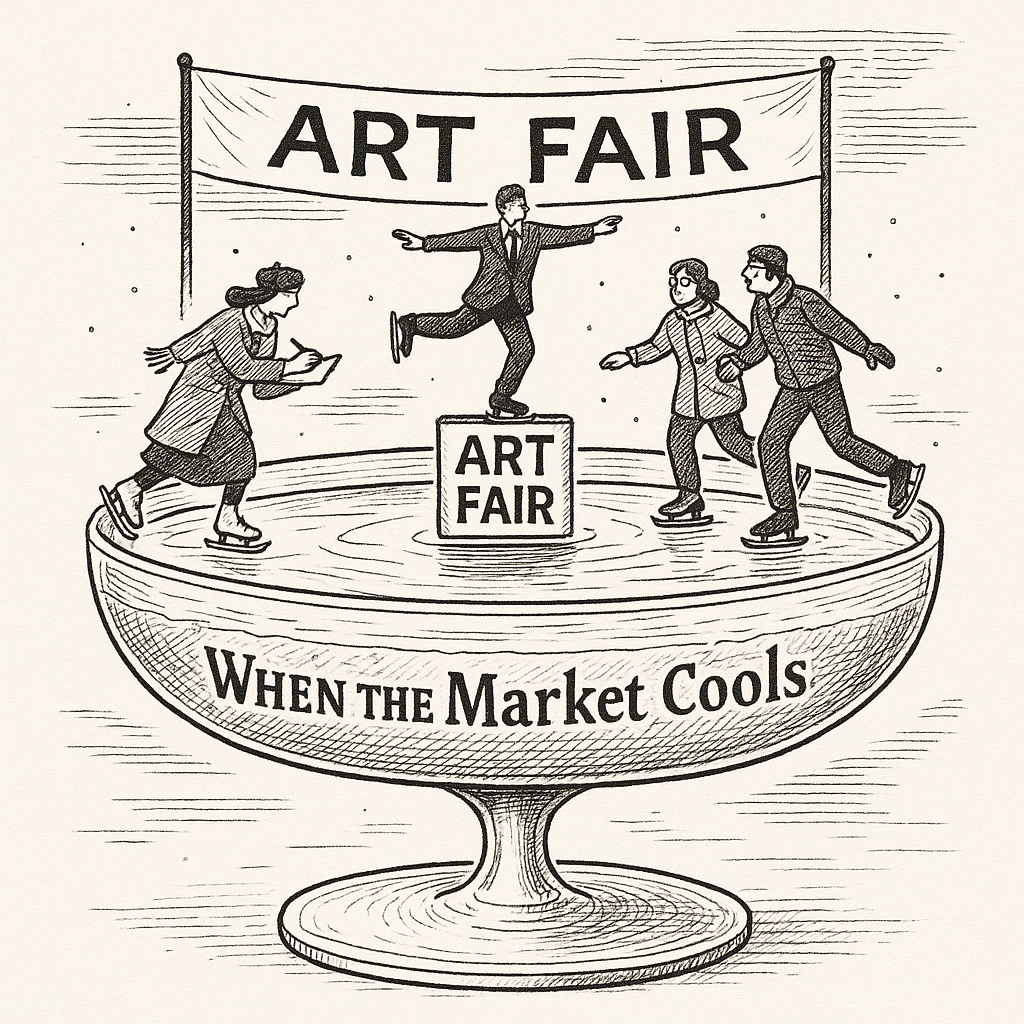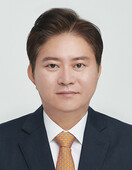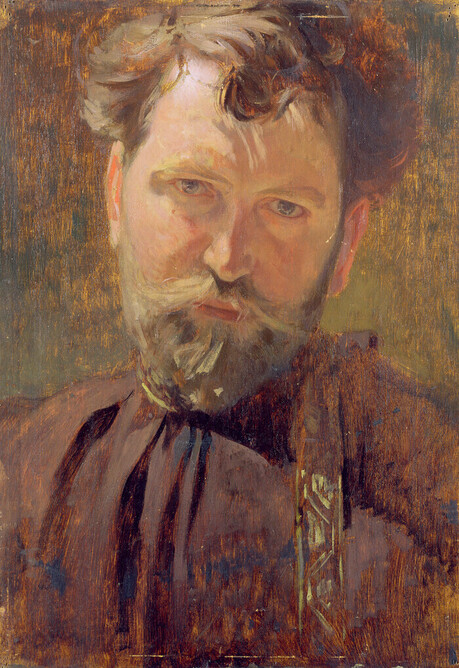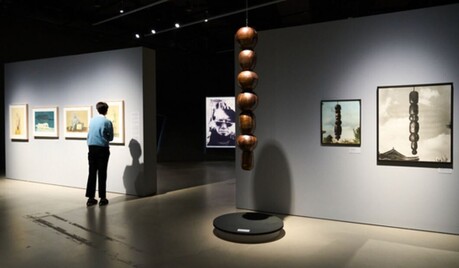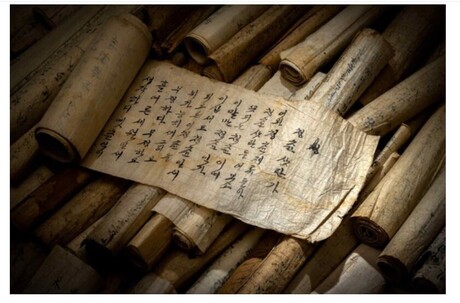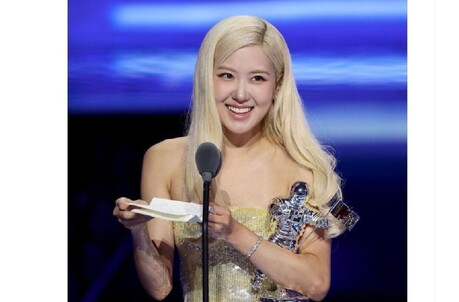PARIS — The champagne still flows, but the mood feels altered. At Art Basel Paris 2025, the world’s most glamorous art fair stands at a crossroads — not of commerce, but of meaning.
Global art sales have declined by nearly 12 percent this year, signaling fatigue at the top of the market. Yet inside the Grand Palais Éphémère, more than 200 galleries continue to gather, rebuild, and reimagine what an art fair can be.
The event now feels less like a shopping mall of masterpieces and more like a forum for cultural survival — where gallerists, collectors, and curators confront a simple, unsettling question: What happens to art when the money slows down?
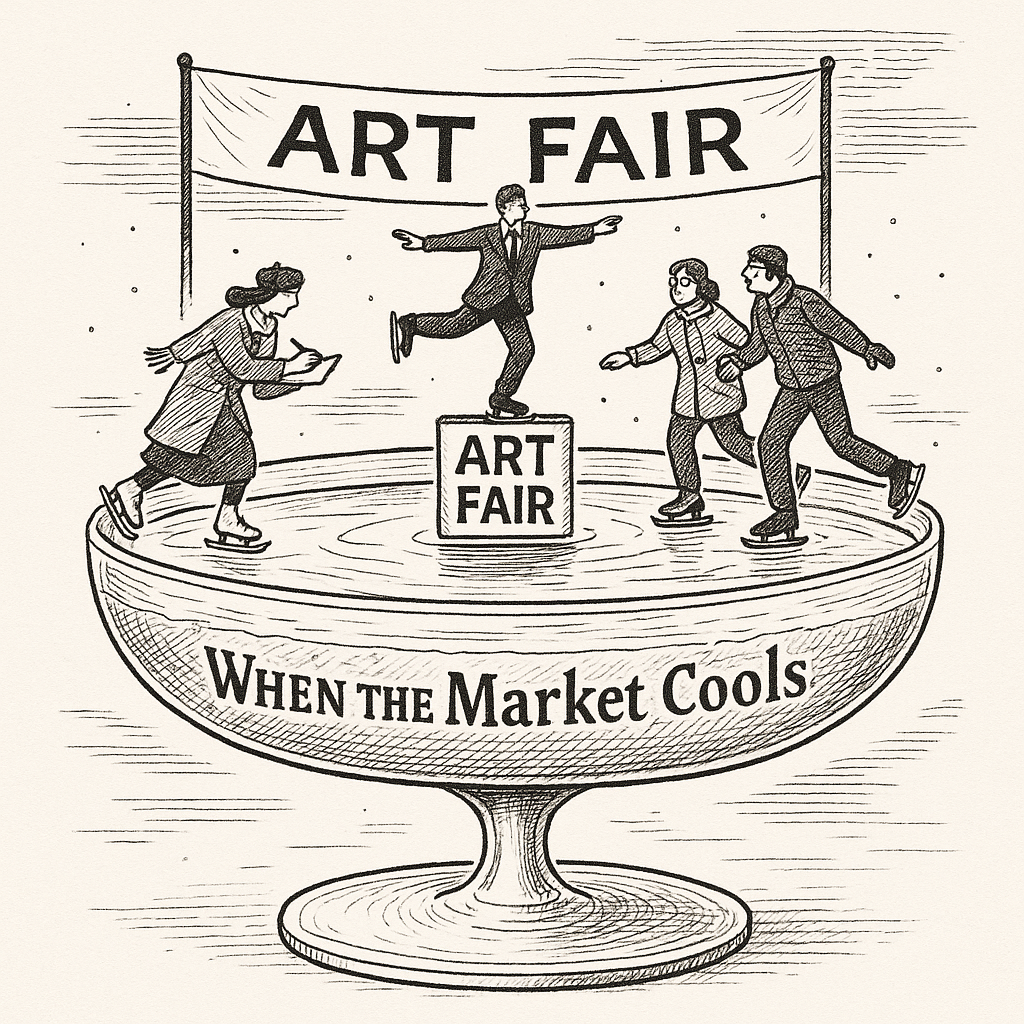
The End of the Champagne Economy
For two decades, art fairs embodied the champagne economy of global culture — a space where wealth, prestige, and aesthetic desire intertwined in one glittering spectacle.
But in 2025, the script is changing. Collectors are turning toward mid-range works under $50,000, a category once dismissed as “entry-level.” Today, it has become the market’s beating heart — intimate, narrative-driven, and human-scaled.
It is no longer about who owns the next Rothko, but who dares to support the next unknown artist.
This shift is not merely economic; it is ethical. The era of speculative collecting, inflated prices, and social-media trophies is giving way to something quieter — a return to intentional collecting, where art is valued for its emotional and intellectual resonance rather than financial return.
Paris as the New Compass
Paris is proving to be the ideal stage for this reckoning. Once overshadowed by Basel, London, and Hong Kong, the French capital is reclaiming its identity — not as a market hub, but as a cultural conscience.
From the Centre Pompidou to the Fondation Louis Vuitton, the city’s art ecosystem has been recalibrating around curated dialogue rather than spectacle. Even the fair’s spatial design this year reinforces cross-disciplinary connection — painting meets performance, sculpture meets sound, and collectors meet communities.
For Korean and other Asian galleries, Paris has become a testing ground for global relevance — an opportunity to present narratives not as regional exports, but as essential threads woven into the global fabric of modern art.
Art’s Quiet Rebellion
In this cooling market, something paradoxical is happening: the art world feels more alive. Freed, at least temporarily, from speculative frenzy, artists and curators are rediscovering the core of art itself — thought, risk, and sincerity.
There is a quiet rebellion unfolding in the corridors of Basel Paris: a refusal to equate visibility with value, or success with auction records.
In an age when nearly everything can be priced, perhaps the greatest luxury is meaning — the one currency that resists inflation.
The Art of Slowing Down
Art Basel Paris 2025 is not merely an event; it is a mirror reflecting an art world learning to breathe again after years of acceleration.
If the market is cooling, that may not be a crisis — it may be a cure. It reminds us what art fairs were meant to be: not battlegrounds for billionaires, but gatherings of ideas — symphonies of diversity, conversation, and care.
When the money moves slower, art begins to think faster. And in that fragile, necessary pause, culture finds its pulse once more.
SayArt.net
Jason Yim| Editor-in-Chief, yimjongho1969@gmail.com


